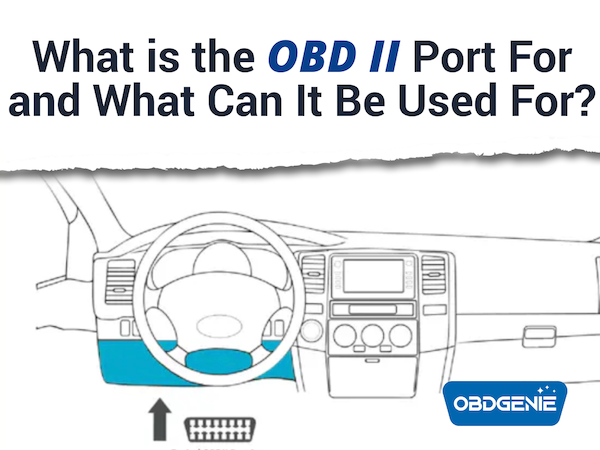
Jan 09 , 2025
What is the OBD II Port For and What Can It Be Used For?
On-Board Diagnostics
The OBD II (On-Board Diagnostics II) port is a fundamental component in modern vehicles, particularly those manufactured after 1996. This blog post will explore the purpose of the OBD II port and its various applications, offering insights into how it can benefit both car enthusiasts and everyday drivers.
What is the OBD II Port?
The OBD II port is essentially the vehicle's communication hub, connecting to the car's onboard computer system. It's a standardized 16-pin connector located typically under the dashboard on the driver's side. This port has been mandatory in vehicles sold in the U.S. since 1996, aimed at standardizing diagnostic procedures for emissions and vehicle performance.
Primary Functions of the OBD II Port
-
Diagnostics: The primary function of the OBD II port is to allow mechanics or users to diagnose vehicle problems. By connecting an OBD II scanner, one can retrieve Diagnostic Trouble Codes (DTCs) that indicate where a problem might be. This can range from issues with the engine, transmission to emissions control systems.
-
Emission Monitoring: OBD II systems monitor the vehicle's emissions in real-time to ensure compliance with environmental regulations. If emissions exceed set thresholds, it can trigger a warning light, like the check engine light, prompting the need for a diagnostic check.
Expanded Uses of the OBD II Port
Beyond its diagnostic capabilities, the OBD II port has been adapted for a variety of modern applications:
-
Performance Tuning: Enthusiasts can use the OBD II port to fine-tune engine performance, adjust fuel-air mixtures, or even change how the car behaves under different conditions. This can be done through various software or hardware that interfaces with the car's ECU (Engine Control Unit).
-
Vehicle Tracking and Telematics: With the right device plugged into the OBD II port, you can track vehicle location, monitor driving habits, and even receive real-time vehicle health updates. These systems can help with fleet management or for personal use to keep track of vehicle usage and maintenance needs.
-
Insurance and Usage-Based Insurance (UBI): Some insurance companies use OBD II dongles to monitor driving behavior, offering discounts or adjusting premiums based on how, when, and where you drive.
-
Mobile Apps and Dashboards: Modern technology has enabled the use of mobile apps that connect via Bluetooth or WiFi to an OBD II scanner, providing live data on your phone. This includes fuel economy, engine temperature, speed, and more, turning your smartphone into an advanced diagnostic tool.
-
Security and Anti-Theft: Some security devices use the OBD II port to monitor for unauthorized use or to disable the vehicle if it's stolen or driven outside of set parameters.
Benefits for Car Owners
-
Cost Saving: Early detection of issues can prevent more significant, costly damages.
-
Convenience: With portable OBD II scanners or apps, diagnostics can be performed without needing to visit a mechanic, saving time and potentially money.
-
Performance and Customization: For those interested in car modifications, the OBD II port offers a gateway to customize the vehicle's behavior and improve performance.
Conclusion
The OBD II port is much more than just a diagnostic tool; it's a versatile interface that has evolved with technology to provide numerous benefits ranging from maintenance to performance enhancements. Whether you're a car enthusiast looking to tweak your vehicle's performance or just want to keep your car running smoothly, understanding and utilizing the OBD II port can be highly advantageous.
For more in-depth information or to explore products that work with the OBD II system, check out our products.
